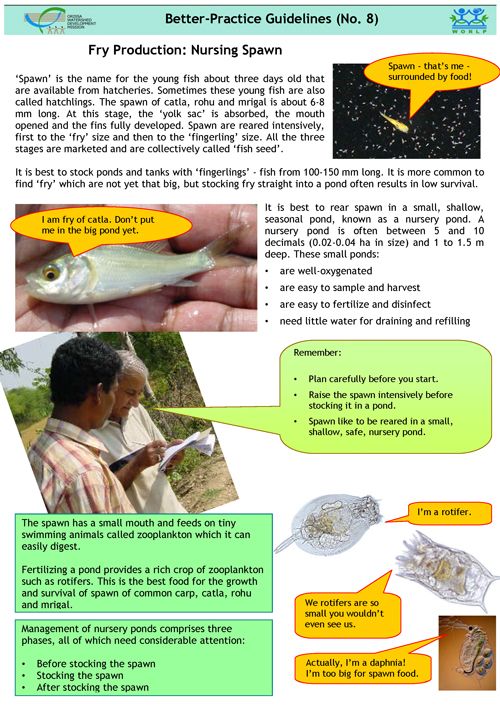Better practice guidelines: Fry production - nursing spawn
31 January 2006 | 2590 Downloads | .pdf | 459.07 KB | Better management practices, Freshwater finfish, Hatchery and nursery, Inland aquaculture, Education and Training, India
‘Spawn’ is the name for the young fish about three days old that are available from hatcheries. Sometimes these young fish are also called hatchlings. The spawn of catla, rohu and mrigal is about 6-8 mm long. At this stage, the ‘yolk sac’ is absorbed, the mouth opened and the fins fully developed. Spawn are reared intensively, first to the ‘fry’ size and then to the ‘fingerling’ size. All the three stages are marketed and are collectively called ‘fish seed’.
It is best to stock ponds and tanks with ‘fingerlings’ - fish from 100-150 mm long. It is more common to find ‘fry’ which are not yet that big, but stocking fry straight into a pond often results in low survival.
It is best to rear spawn in a small, shallow, seasonal pond, known as a nursery pond. A nursery pond is often between 5 and 10 decimals (0.02-0.04 ha in size) and 1 to 1.5 m deep. These small ponds are:
- Well-oxygenated.
- Easy to sample and harvest.
- Easy to fertilise and disinfect.
- Need little water for draining and refilling.
This publication is also available in Oriya.
Creative Commons Attribution.

